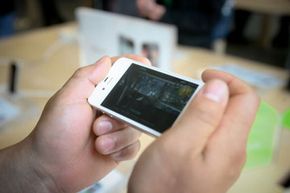With the advent of smartphones, many people are using their cell phones for more than just phone calls and texting. You can check your e-mail, catch up on Facebook, browse the Internet and even watch videos, all on the go. While that tiny telephone screen will probably never fully replace the TV, cell phones have already affected our viewing habits and changed the TV industry.
In addition to playing video, cell phones interact with televisions in exciting new ways. The iPhone's Remote app lets you use your iPhone to control your iTunes library or an Apple TV. If you've got the right setup, you can use your cell phone to watch streaming or downloaded content at full size on your TV screen without waiting through commercials or even setting your DVR. If you do want to record something, though, cell phones also now have programmable DVR apps that allow you to set your DVR to record no matter where you are. Using your cell phone as a DVR remote makes it easier to time shift programming.
Advertisement
Networks are also finding less conventional ways to use smartphones to engage viewers, and one growing trend is creating cell phone video games based on popular TV shows. Sure, we've seen TV-inspired video games before, but this new trend focuses on games just for cell phones and based on shows that you might not have associated with video games in the past. For example, NBC is partnering with Telltale Games to release a "Law & Order" cell phone-only video game.
Between users interacting with TVs and actually viewing video content on cell phones, the television industry has taken notice and is working to adapt to these new user behaviors. While networks don't necessarily think of themselves as competing with cell phones for viewership, the TV game is definitely changing as a result of smartphone technology.
Read on to learn more about how networks are keeping up in the age of smartphones.
Advertisement



